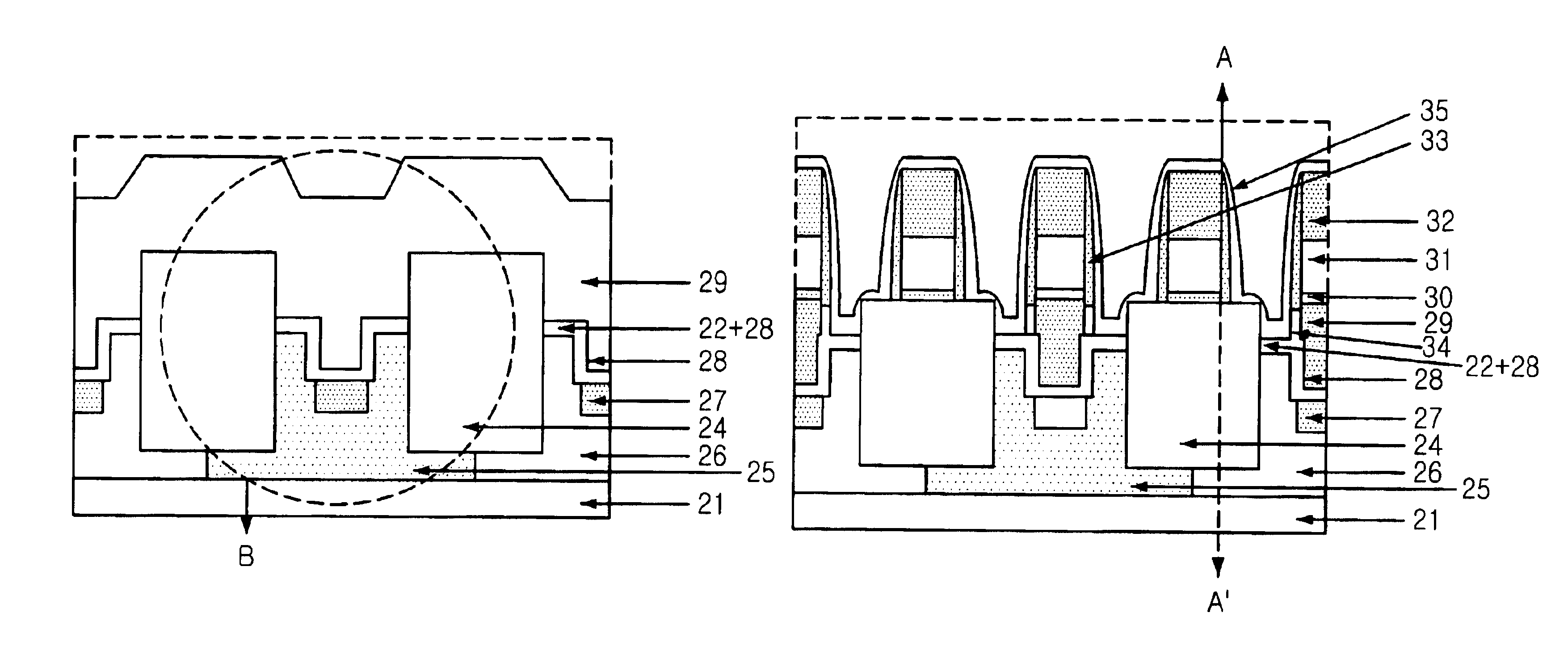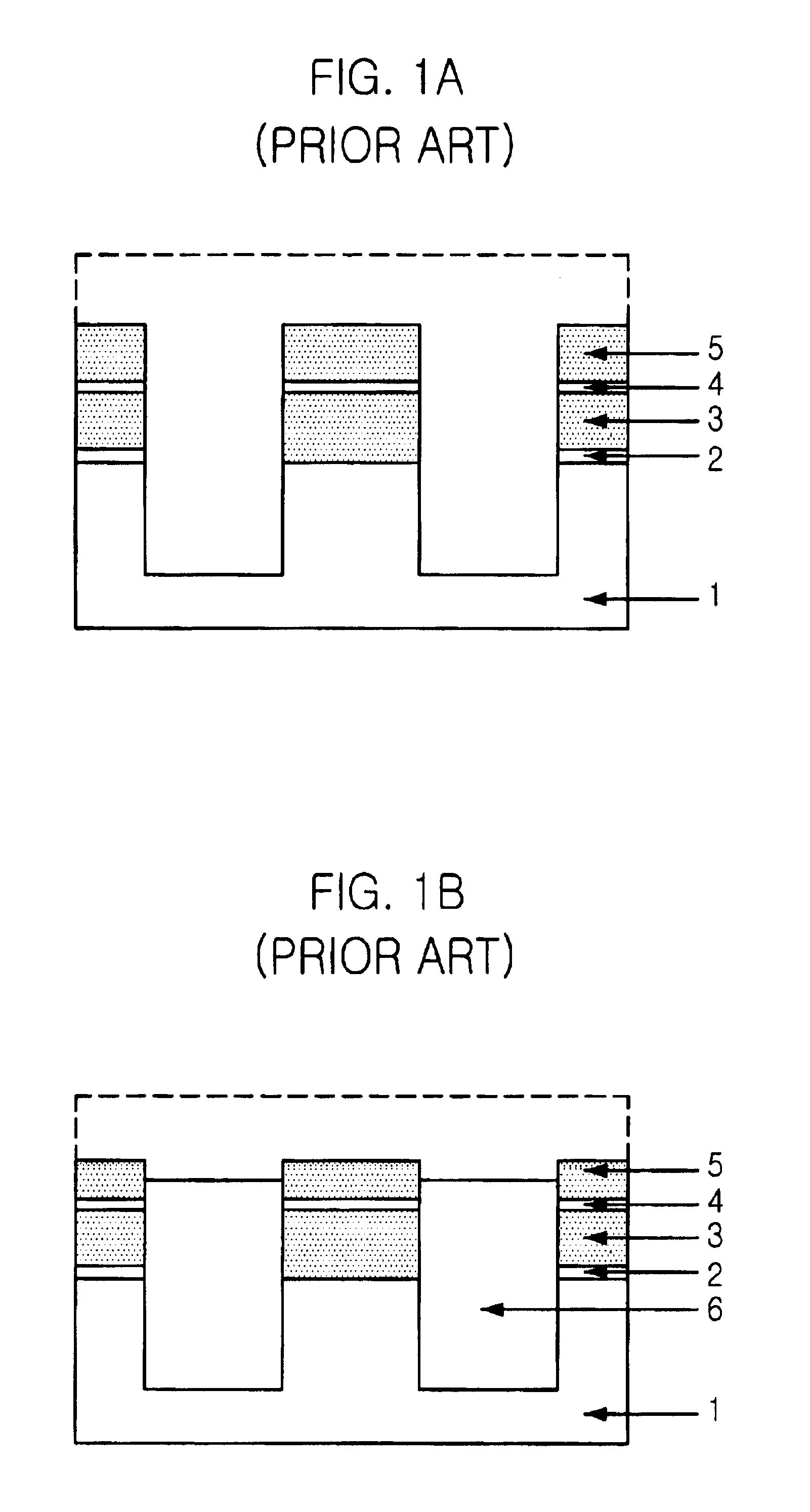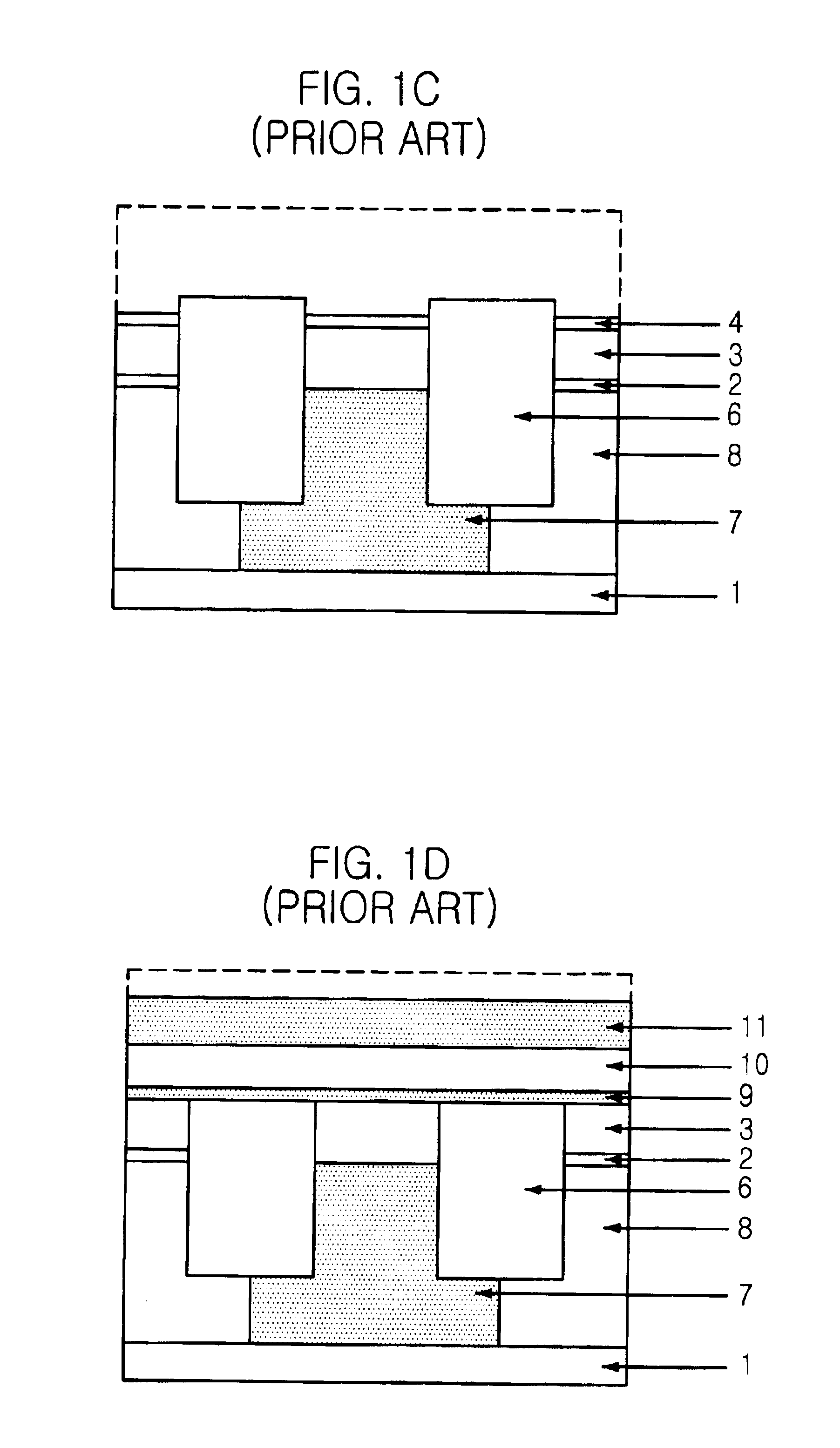Method for fabricating metal-oxide semiconductor transistor
a metal-oxide semiconductor and transistor technology, applied in the direction of semiconductor devices, basic electric elements, electrical appliances, etc., can solve the problem that void generation can easily occur during the deposition of the device isolation layer, and achieve the effects of enhancing device characteristics, reducing gate induced drain current, and improving short channel
- Summary
- Abstract
- Description
- Claims
- Application Information
AI Technical Summary
Benefits of technology
Problems solved by technology
Method used
Image
Examples
Embodiment Construction
Hereinafter, a method for fabricating a metal-oxide semiconductor (MOS) transistor will be described in more detail with reference to the drawings.
Referring to FIG. 3A, a first oxide layer 22 is grown on a substrate 21, and a first nitride layer 23 is formed thereon. Afterwards, the first nitride layer 23 and the first oxide layer 22 are selectively etched with use of a predetermined mask (not shown) for forming a device isolation layer, and a portion of the substrate 21 exposed by the above selective etch process is etched to a predetermined depth to thereby form a first trench at a device isolation region. The first oxide layer 22 has a thickness ranging from about 5 nm to about 20 nm, and the first nitride layer 23 has a thickness ranging from about 50 nm to about 150 nm. It is preferable to form the first trench with a thickness ranging from about 150 nm to about 400 nm.
Referring to FIG. 3B, a device isolation oxide layer 24 is formed on an entire surface of the substrate 21 in ...
PUM
| Property | Measurement | Unit |
|---|---|---|
| thickness | aaaaa | aaaaa |
| thickness | aaaaa | aaaaa |
| thickness | aaaaa | aaaaa |
Abstract
Description
Claims
Application Information
 Login to View More
Login to View More - R&D
- Intellectual Property
- Life Sciences
- Materials
- Tech Scout
- Unparalleled Data Quality
- Higher Quality Content
- 60% Fewer Hallucinations
Browse by: Latest US Patents, China's latest patents, Technical Efficacy Thesaurus, Application Domain, Technology Topic, Popular Technical Reports.
© 2025 PatSnap. All rights reserved.Legal|Privacy policy|Modern Slavery Act Transparency Statement|Sitemap|About US| Contact US: help@patsnap.com



